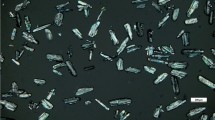Abstract
We have investigated the transport of ranitidine and ondansetron across the Caco-2 cell monolayers. The apparent permeability coefficients (P app) were unchanged throughout the concentration range studied, indicating a passive diffusion pathway across intestinal mucosa. No metabolism was observed for ranitidine and ondansetron during the incubation with Caco-2 cell monolayers. P app values for ranitidine and ondansetron (bioavailability of 50 and ∼100% in humans, respectively) were 1.03 ± 0.17 × 10−7 and 1.83 ± 0.055 × 10−5 cm/sec, respectively. The P app value for ranitidine was increased by 15- to 20-fold in a calcium-free medium or in the transport medium containing EDTA, whereas no significant change occurred with ondansetron, indicating that paracellular passive diffusion is not rate determining for ondansetron. Uptake of ondansetron by Caco-2 cell monolayers was 20- and 5-fold higher than that of ranitidine when the uptake study was carried out under sink conditions and at steady state. These results suggest that ranitidine and ondansetron are transported across Caco-2 cell monolayers predominantly via paracellular and transcellular pathways, respectively.
Similar content being viewed by others
REFERENCES
I. Hidalgo, T. Raub, and R. Borchardt. Characterization of the human colon carcinoma cell line (Caco-2) as a model system for intestinal epithelial permeability. Gastroenterology 96:736–749 (1989).
P. Artursson. Epithelial transport of drugs in cell culture. I. A model for studying the passive diffusion of drugs over intestinal absorbtive (Caco-2) cells. J. Pharm Sci. 79:476–482 (1990).
G. Wilson, I. Hassan, C. Dix, I. Williamson, R. Shah, M. Mackay, and P. Artusson. Transport and permeability properties of human Caco-2 cells: An in vitro model of the intestinal epithelial cell barrier. J. Control. Release 11:25–40 (1990).
A. Hilgers, R. Conradi, and P. Burton. Caco-2 cell monolayers as a model for drug transport across the intestinal mucosa. Pharm. Res. 7:902–910 (1990).
P. Artusson. Cell culture as models for drug absorption across the intestinal mucosa. Crit. Rev. Ther. Drug Carrier Syst. 8:305–330 (1991).
J. Cogburn, M. Donovan, and C. Schasteen. A model of human small intestinal absorptive cells. 1. Transport barrier. Pharm. Res. 8:210–216 (1991).
M. Pinto, S. Robine-Leon, M.-D. Appay, M. Kedinger, N. Triadou, E. Dussaulx, B. Lacroix, P. Simon-Assmann, K. Haffen, J. Fogh, and A. Zweibaum. Enterocyte-like differentiation and polarization of the human colon carcinoma cell line Caco-2 in culture. Biol. Cell 47:323–330 (1983).
A. Blais, P. Bissonnette, and A. Berteloot. Common characteristics for Na+-dependent sugar transport in Caco-2 cells and human fetal colon. J. Membr. Biol. 99:113–125 (1987).
T. Smith, C. Gibson, B. Howlin, and J. Pratt. Active transport of amino acids by gamma-glutamyl transpeptidase through Caco-2 cell monolayers. Biochem. Biophys. Res. Commun. 178:1028–1035 (1991).
M. Yoshioka, P. Erickson, H. Matsumoto, E. Gum, and Y. Kim. Expression of dipeptidyl aminopeptidase IV during enterocytic differentiation of human colon cancer (Caco-2) cells. Int. J. Cancer 47:916–921 (1991).
A. Baranczyk-Kuzma, J. Garren, I. Hidalgo, and R. Borchardt. Substrate specificity and some properties of phenol sulfotransferase from human intestinal Caco-2 cells. Life Sci. 49:1197–1206 (1991).
M. Hu and R. Borchardt. Mechanism ofL-α-methyldopa transport through a monolayer of polarized human intestinal epithelial cells (Caco-2). Pharm. Res. 7:1313–1319 (1990).
A. Dantzig and L. Bergin. Uptake of the cephalosporin, cephalexin, by a dipeptide transport carrier in the human intestinal cell line, Caco-2. Biochim. Biophys. Acta 1027:211–217 (1990).
A. Lahey, T. Niederer, T. Tung, R. St. Clair, L.-S. Gan, and D. Thakker. Transport and metabolism of dipeptide L-alanyl-L-alanine in a cell culture model system for the intestinal epithelium. FASEB J. 5:A762 (1991).
P. Artursson and C. Magnusson. Epithelial transport of drugs in cell culture. II. Effect of extracellular calcium concentration on the paracellular transport of drugs of different lipophilicities across monolayers of the intestinal epithelial (Caco-2) cells. J. Pharm. Sci. 79:595–600 (1990).
P. Artursson and J. Karlsson. Correlation between oral drug absorption in humans and apparent drug permeability coefficients in human intestinal epithelial (Caco-2) cells. Biochem. Biophys. Res. Commun. 175:880–885 (1991).
C. Blackwell and S. Harding. The clinical pharmacology of ondansetron. Eur. J. Cancer Clin. Oncol. 25:S21–S24 (1989).
B. Chaffee and R. Tankanow. Ondansetron—The first of a new class of antiemetic agents. Clin. Pharm. 10:430–446 (1991).
W. Figg, G. Dukes, J. Pritchard, L. Hak, S. Songer, H. Lesesne, C. Kao, D. Hermann, and J. Powell. Ondansetron (OND) pharmacokinetics in chronic liver disease (LD). Clin. Pharmacol. Ther. 51:171 (1992).
P. Hsyu, H. Bozigian, J. Pritchard, A. Kernodle, J. Panella, L. Hansen, and R. Griffin. Effect of chemotherapy on the pharmacokinetics of oral ondansetron. Pharm. Res. 8:S257 (1991).
P. Colthup, C. Felgate, J. Palmer, and N. Scully. Determination of ondansetron in plasma and its pharmacokinetics in the young and elderly. J. Pharm. Sci. 80:868–871 (1991).
M. Williams, G. Dukes, W. Heizer, Y.-H. Han, D. Herman, T. Lampkin, and L. Hak. Influence of site of drug delivery on the absorption characteristics of ranitidine. Pharm. Res. 9:1190–1194 (1992).
D. Gary, D. Weidler, and F. Eshelman. Ranitidine bioavailability and kinetics in normal male subjects. Clin. Pharmacol. Ther. 33:445–452 (1983).
A. De Boer, A. Noach, M. Roosemalen, Y. Kurosaki, and D. Breimer. Effect of apical and/or basolateral application of EDTA on the permeability of hydrophilic compounds in a human intestinal epithelial cell line (Caco-2). Pharm. Res. 8:S215 (1991).
Author information
Authors and Affiliations
Rights and permissions
About this article
Cite this article
Gan, LS., Hsyu, PH., Pritchard, J.F. et al. Mechanism of Intestinal Absorption of Ranitidine and Ondansetron: Transport Across Caco-2 Cell Monolayers. Pharm Res 10, 1722–1725 (1993). https://doi.org/10.1023/A:1018965929419
Issue Date:
DOI: https://doi.org/10.1023/A:1018965929419




